RARE Operation Courageous Airborne Mission - 674th Airborne Field Artillery Battalion Target Map MUNSAN-NI
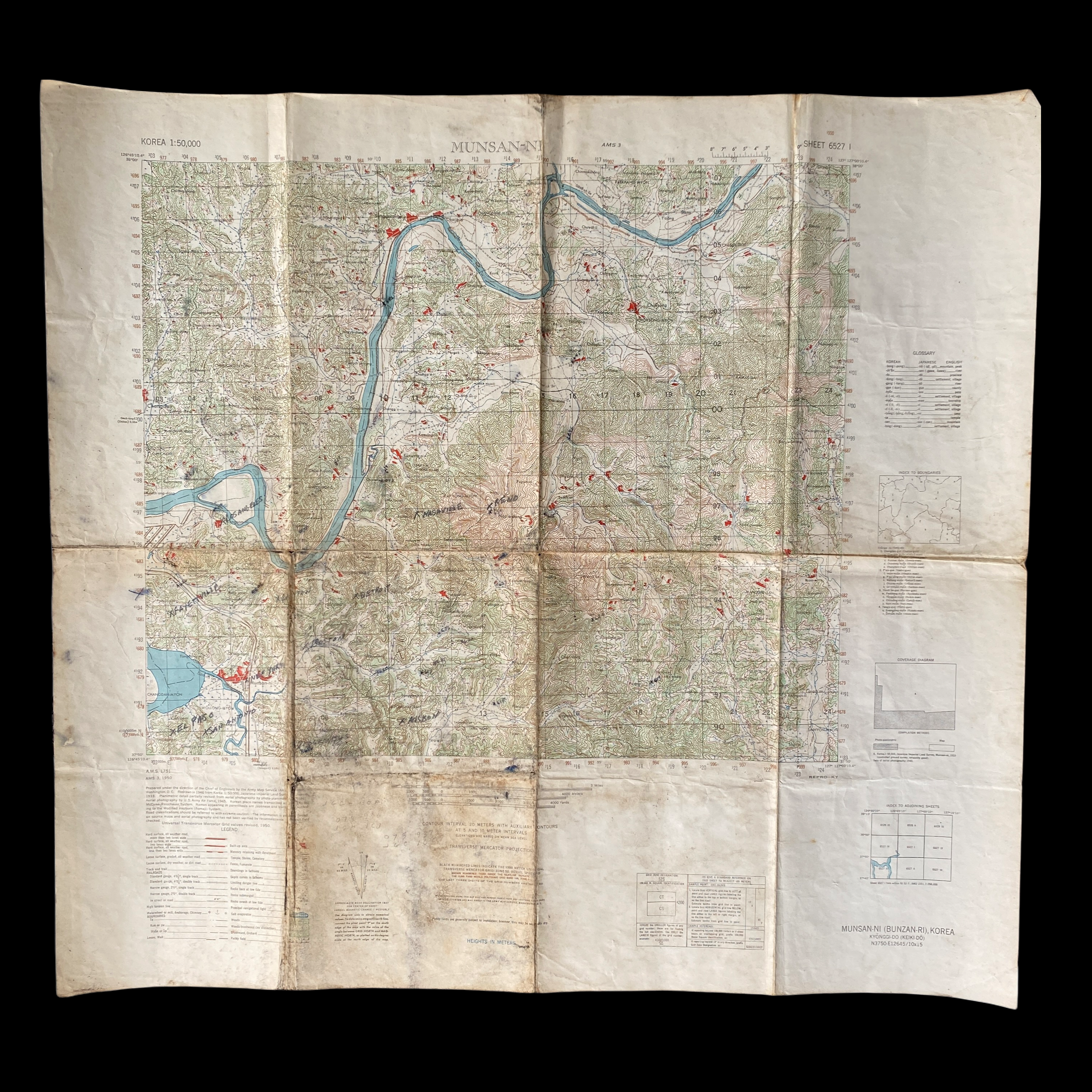
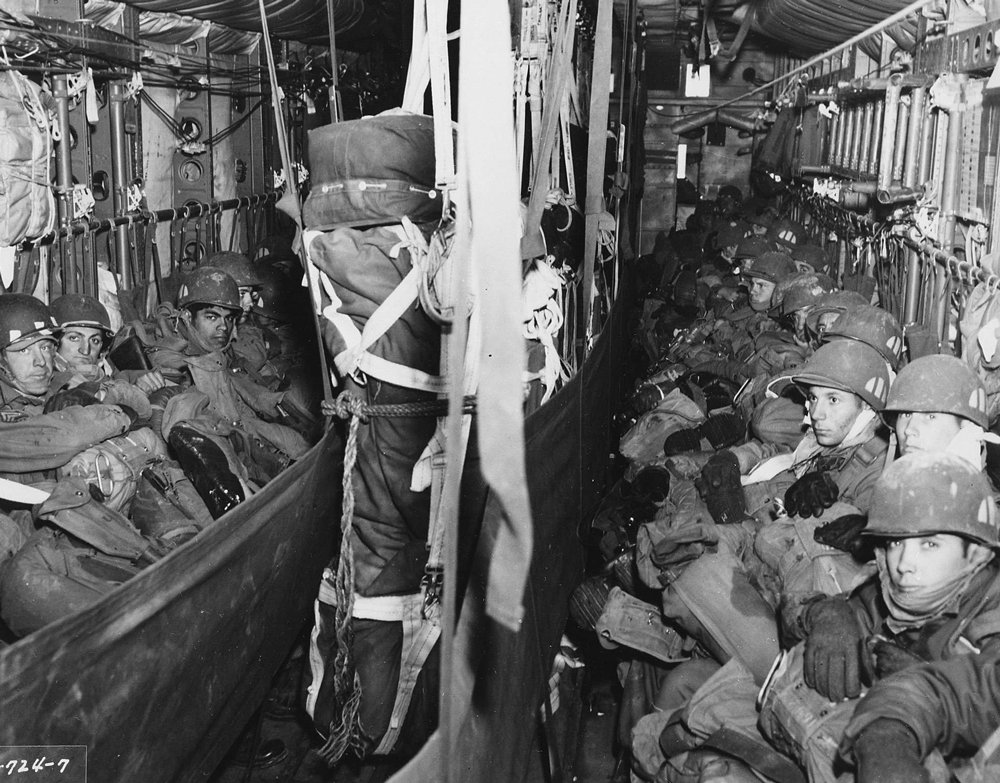

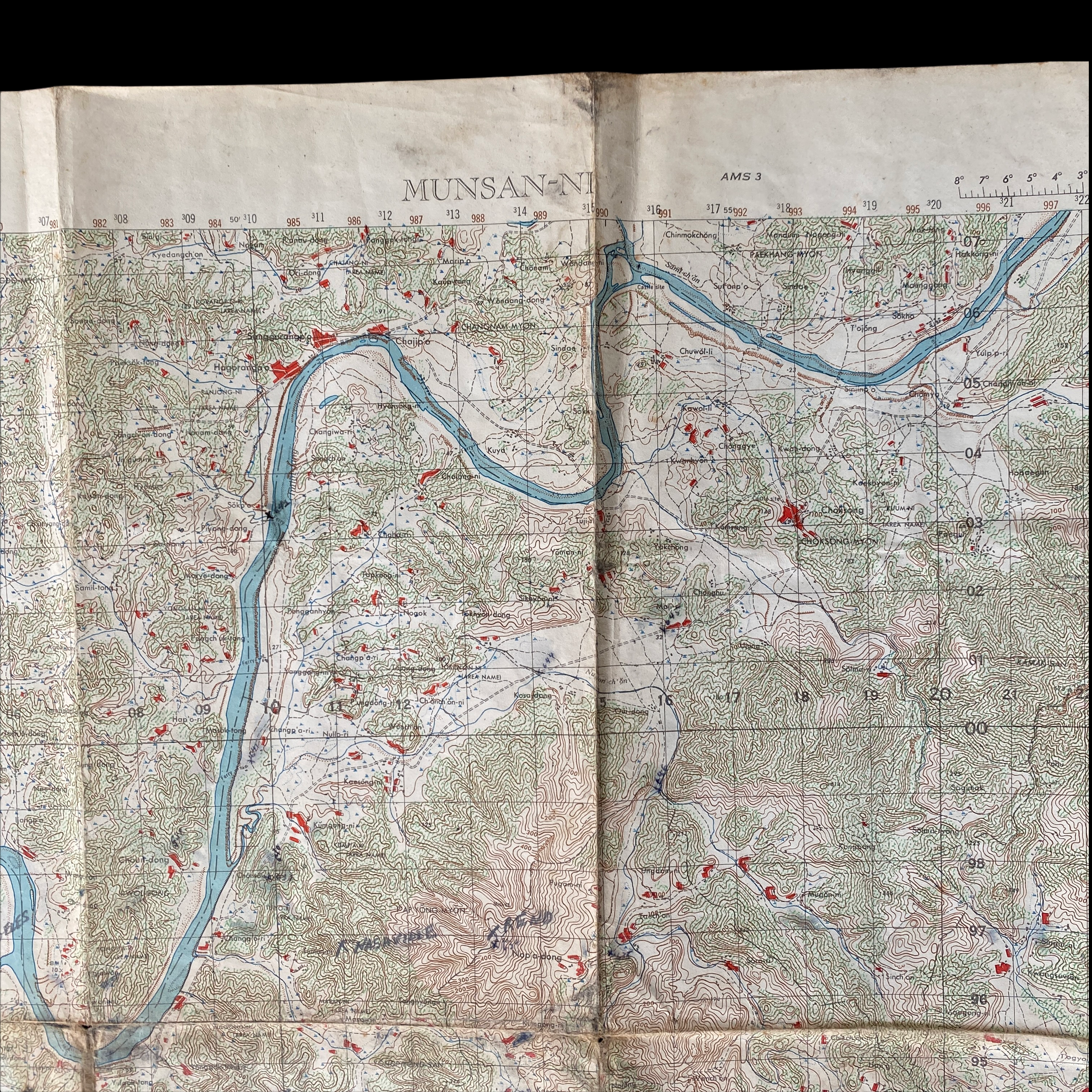

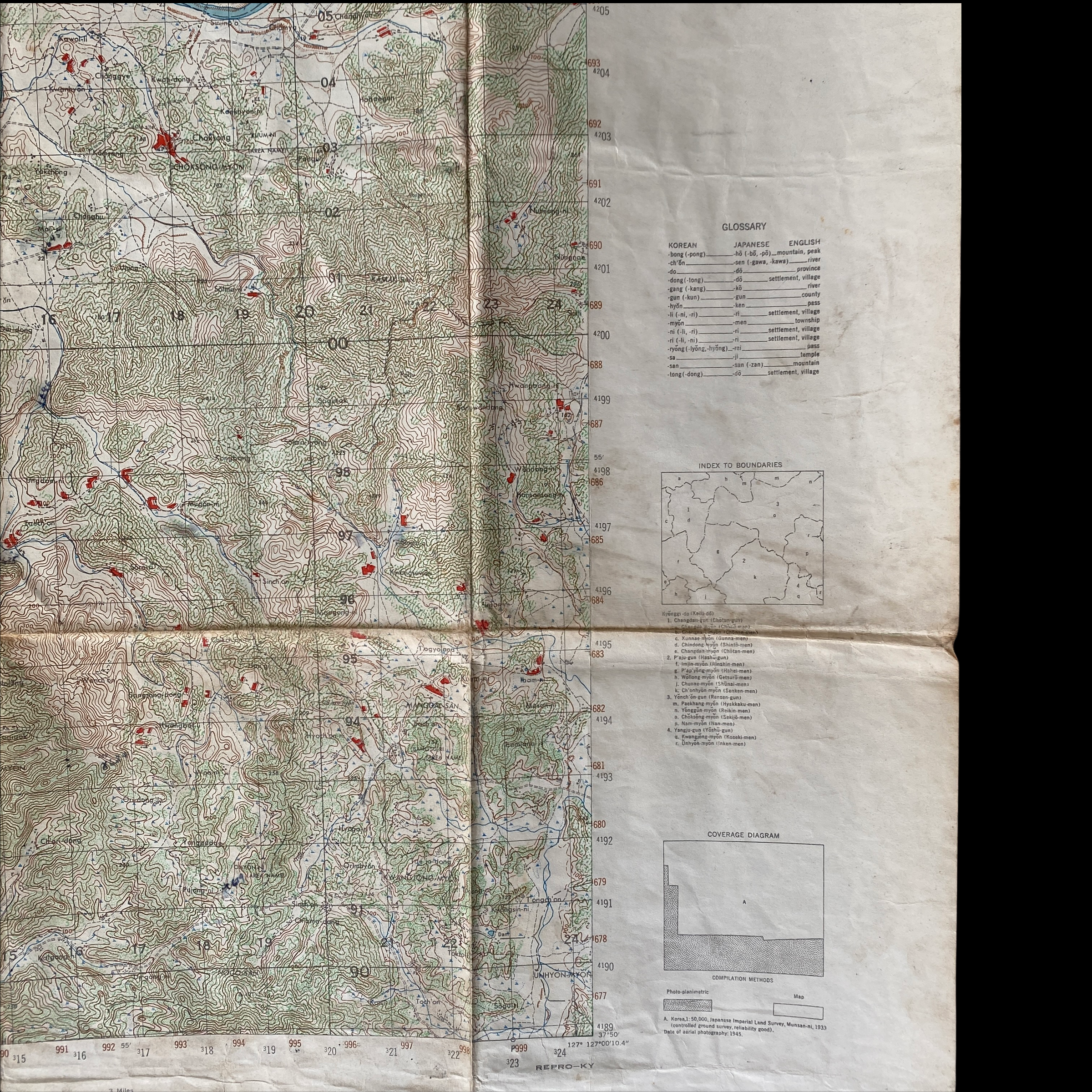
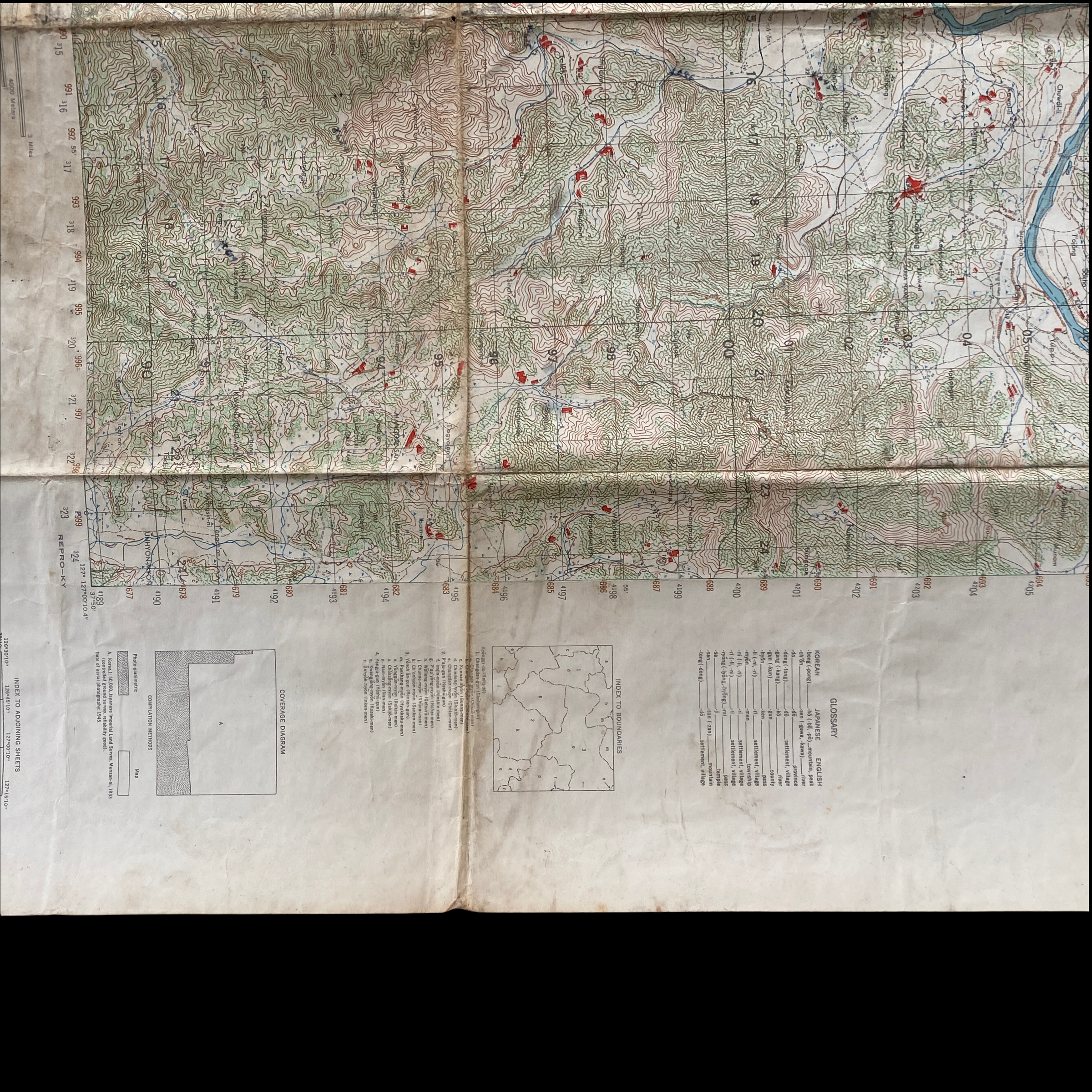

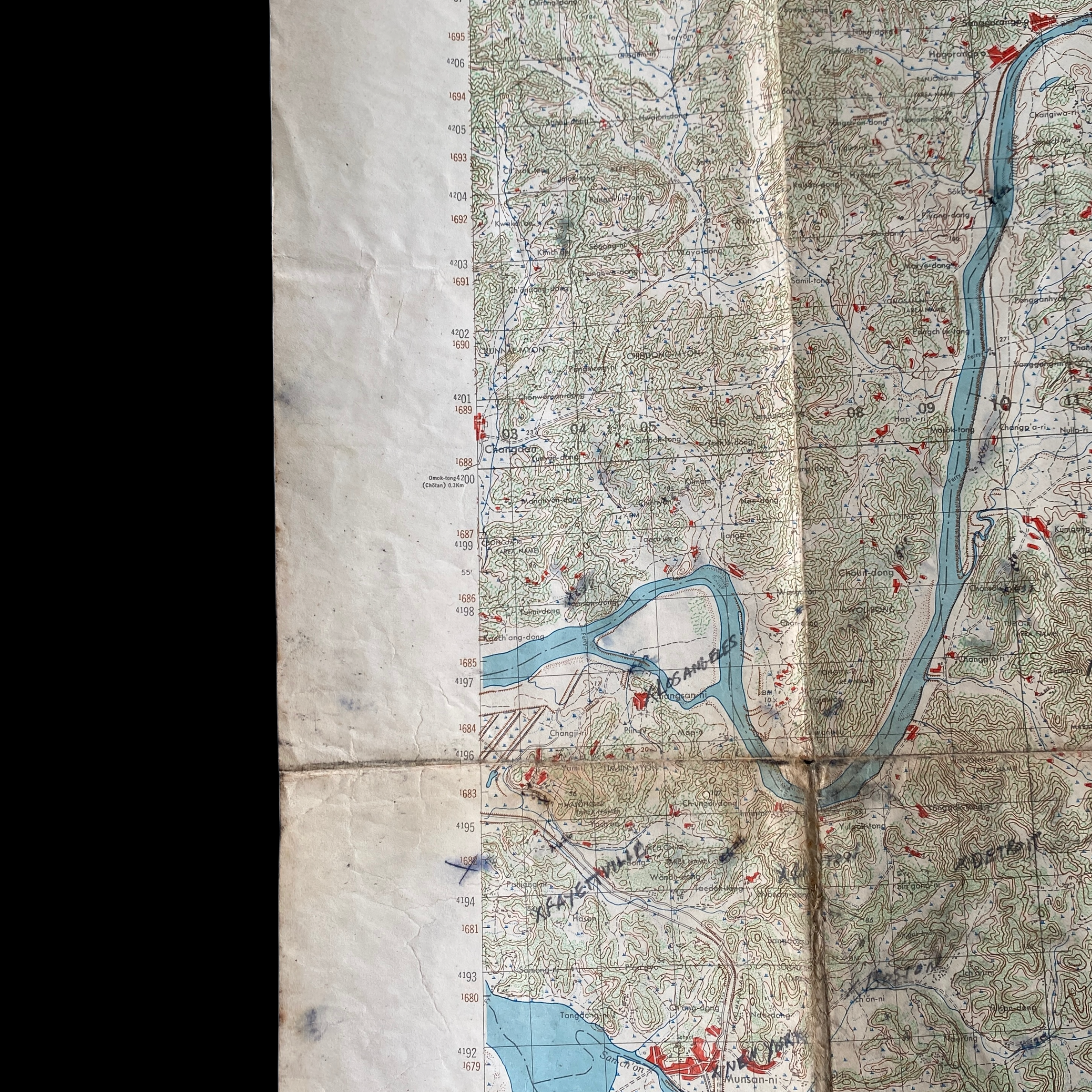






















RARE Operation Courageous Airborne Mission - 674th Airborne Field Artillery Battalion Target Map MUNSAN-NI
Comes with C.O.A.
*This rare airborne jump-map was used during Operation Tomahawk and Operation Courageous (second-largest airborne operation of the war) by the 187th Regimental Combat Team on 23 March 1951 at Munsan-ni. This heavily marked artillery map used during this intent operation has SECRET name designations (NEW YORK, DETROIT, ETC.) as well as countless artillery coordinate mission marks as fired by the 674th FABN in support of the airborne operation.
This RARE and heavily marked Korean War artillery map of the 674th Airborne Field Artillery Battalion. This map shows lots of battle use with an outstanding amount of artillery target designations on enemies in the area. It is very rare to find an operationally marked map like this.
This incredible Korean War artillery map was used by John L. Booge of the 674th Airborne Field Artillery Battalion. Serving as an artilleryman supporting the 187th Airborne Regimental Combat Team, Booge used this map during intense combat operations in some of the most intense battles and operations of the Korean War. Booge was extremely fortunate to survive the war and send home what are believed to be almost all of the operational theater artillery maps he used during the war addressed to his wife Mrs. Gertrude Booge in Pasadena, California.
This special artillery map is dated 1950 and is titled MUNSAN-NI. This map was produced very meticulously with each square, color variation, and line designations specially placed to provide artillerymen with the most accurate firing sectors for easy and fast-firing adjustments.
Operation Tomahawk and Operation Courageous:
Operation Tomahawk was an airborne military operation by the 187th Regimental Combat Team (187th RCT) on 23 March 1951 at Munsan-ni as part of Operation Courageous in the Korean War. Operation Courageous was designed to trap large numbers of Chinese People's Volunteer Army (PVA) and Korean People's Army (KPA) forces between the Han and Imjin Rivers north of Seoul, opposite the Republic of Korea Army (ROK) I Corps. One hundred twenty C-119s and C-46s dropped 3,437 paratroopers of the 187th RCT and 12 officers and men of the 60th Indian Parachute Field Ambulance (PFA) near Munsan-ni in the second-largest airborne operation of the war.
Exerpts from the book Striking Back: Combat in Korea, March-April 1951 which highlights the heroic actions of the 674th Airborne Field Artillery Battalion:
187th Airborne Regimental Combat Team, 24–25 March 1951 (pp. 151-177)
“Word was received from I Corps at 1110 hours ordering the 187th to move immediately to the vicinity of Sinch’on. The S-3 alerted all units and directed them to recall their patrols, move into a tight bivouac, and prepare to move to new positions by foot. The 674th Airborne Field Artillery Battalion was notified to carry all ammunition possible with what transportation was available. At this time, transportation was critically short due to the fact the land tail had not as yet accomplished their linkup. The land tail was not late in arriving, however. The move was ordered prior to...”
Chapter 8 CUTTING THE UIJONGBU ROAD: 187th Airborne Regimental Combat Team, 26–28 March 1951 (pp. 178-219)
“Maj. Charles M. Holland, executive officer, 1st Battalion: On 26 March at 0700 hours the 1st Battalion, under supporting fires from the 674th Airborne Field Artillery Battalion and the 81mm and 60mm mortars of the 1st Battalion, jumped off in the attack. Two reinforced squads from the 3d Platoon of Company A took Hill 203 unopposed. The 3d Platoon of Company A remained on the hill to secure the left flank of the battalion attack. The 1st Battalion fought an all day firefight from 0700 to 1500 for Hill 178. Companies B and C attacked, and the remainder of Company...”
History of the 674th Airborne Field Artillery Battalion:
Under the command of COL Frank S. Bowen, the 187th was paired up with the 674th Field Artillery Battalion and supporting units to form the 187th Airborne Regimental Combat Team (RCT). From Kimpo, the 187th and the 674th Field Artillery Battalion made an airborne assault at Sunchon-Sukchon, thirty miles north of Pyongyang, to cut off an estimated 30,000 retreating North Korean soldiers and rescue U.S. POWs believed to be with those forces. The drop included a number of firsts, including the first combat drop from C-119s and the first successful heavy drop of 105mm howitzers, jeeps and other equipment. During the Eighth Army’s retreat after the Chinese intervened, the 187th and the British Commonwealth Brigade served as the Eighth Army’s rearguard.
Throughout the rest of the Korean War, the 187th and 647th FABN saw heavy fighting, particularly at Wonju in February 1951. In March 1951, the RCT made another airborne assault at Munsan-ni. In 1952, the 187th was withdrawn to Japan as part of the U.S. Far East Command reserve. Troops later helped subdue POW camp riots in June 1952. For its service in Korea, the Rakkasans were awarded four unit citations, and three soldiers were awarded the Medal of Honor. In total, the 187th suffered 2,115 casualties in Korea, including 442 killed in action.